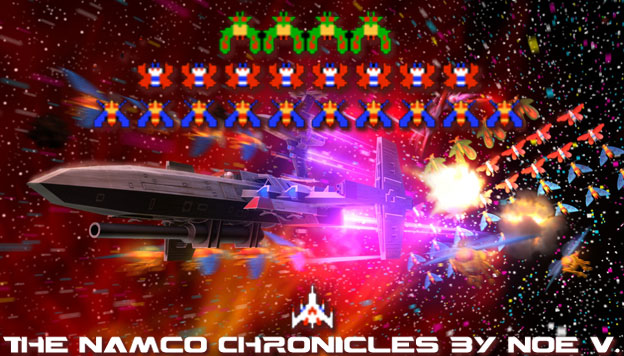
The Ace Combat series was built with an eye towards the future of aerial combat. Every game in the series was set in a slightly more modern place than now. Each nation featured in the game had access to technology that surpassed our own, but only by a few years. The series was great from a player perspective. It had solid controls, graphics, sound, music, design and gameplay. The story elements were well done and helped pull audiences into the world. It had a very strong appeal to people that enjoyed futurism. No "episode" was more important to the entire history of Namco than
Ace Combat 3 Electrosphere. Released for the Playstation in the year 2000, this game in the series was set further into the future than any other entry.
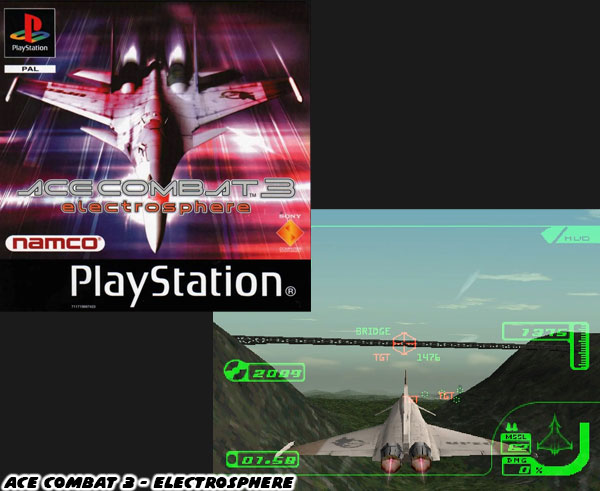
To be specific it was set in 2040. At that point the primary sources of fuel had shifted over from fossil and nuclear to some nebulous format. Corporations were very much running independent nations and conflicts were fought online as much as they were with guns. Drone fighters had pretty much filled out the air force of smaller countries and at least one nation supported a sub-orbital platform that went from reconnaissance to weaponized. An entirely new era of the "space race" had begun. Tensions between the industrialized nations had never been higher.
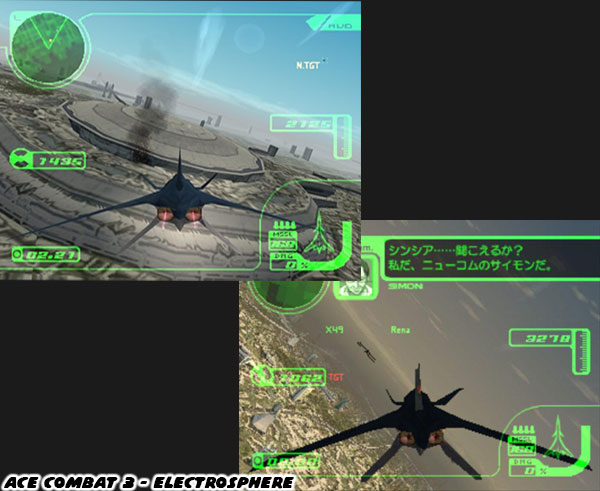
The pilots that served in the game were pioneers of entirely new forms of aircraft. None was as revolutionary as the R-103 Delphinus. Designed by the engineers of Neucom, one of the massive corporations from Namco continuity along with General Resource LTD., it was a breakthrough in every facet of technology. From the lightweight but sturdy materials it was constructed out of to the navigations systems, engines and range. Every aspect of the jet was from some far off future. The interface that controlled the aircraft was not a yoke and pedals, those were the mechanical inputs that had gone relatively unchanged in over a century.
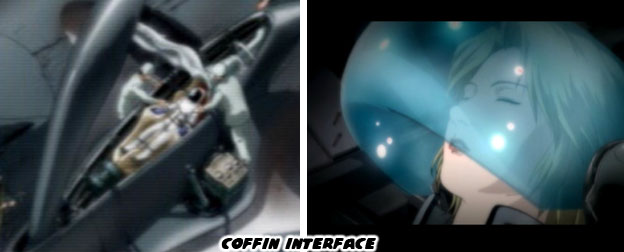
Instead pilots laid prone inside of the ship in what was nicknamed the
COFFIN or Connection for Flight Interface. This system allowed the pilot to connect their neural pathways to the plane itself and steer the vessel by thought alone. Pilots went into an almost sleep-like trance but could still react and even “see” a full 360 degrees around the plane. They used the dozens of cameras and sensors built into the frame of the ship.
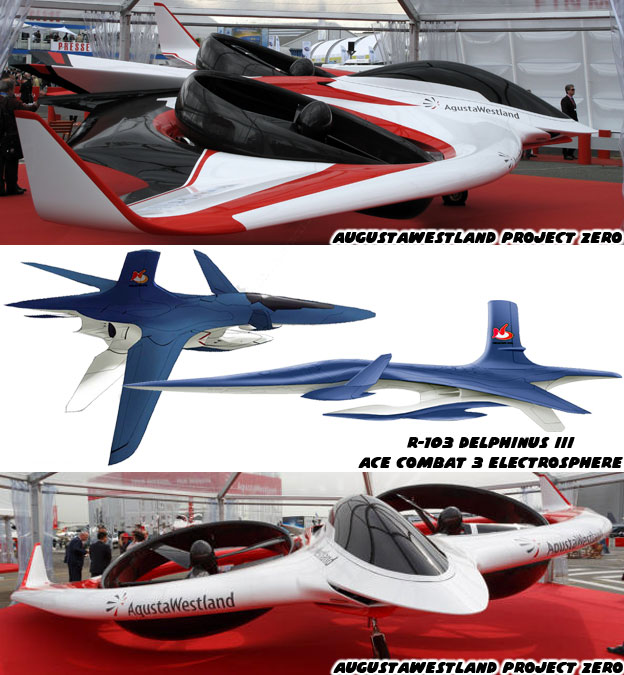
The Delphinus was an awe-inspiring design that had no peer. Not in real life or even in science fiction. It took more than a decade for an actual manufacturer to even come close to its radical design. The
AugustaWestland Zero Hybrid Tilt-Rotor Aircraft was an experimental plane that wanted to challenge conventional design and production methods. The developers had a small budget and the idea to create an all-electric airplane. The engineers at AugustaWestland realized that they needed a greater power output so they went with hybrid technology. Despite the compromise they managed to introduce a plane that had a terrific range and the ability to take off like a helicopter and fly like a plane. When I first saw pictures of the airplane I knew that it was designs like this that would eventually lead up to aircraft like the Delphinus. As for the COFFIN system I remember reading about some of the experimental helmets worn by US Air Force pilots. They projected an image on the visor that had an exaggerated view of the aircraft using cameras and allowed pilots to see almost completely around the plane without having to turn their head.
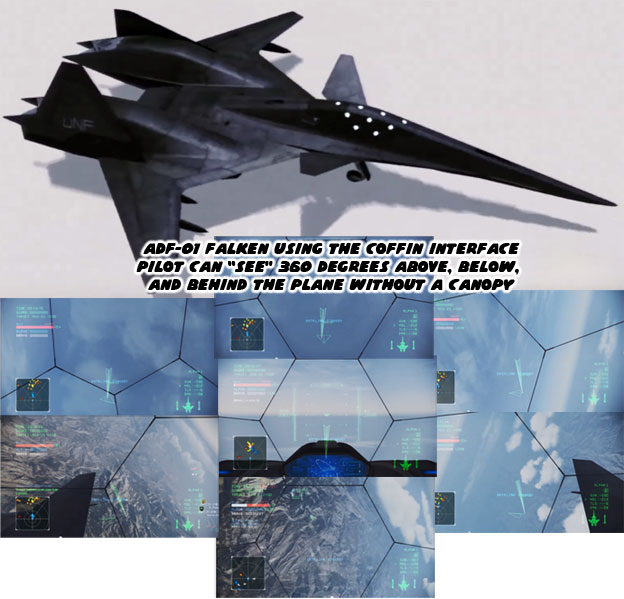
As futuristic as the Delphinus was it was not without competition. The same technology that went into its creation was also used for the more aggressive ADF-01 Falken in latter versions of the Ace Combat series. This fighter was the pinnacle of air superiority. If I could compare it to the cars from Ridge Racer then it was like the Devil 13 and Angel 0 rolled into one. Only the best players of the series could unlock the jet and its contemporary the X-02 Wyvern. The jet was extremely fast, handled amazingly well and had a multitude of weapons. The most impressive of these was a Tactical Laser System. The laser could only deliver about 14 shots before being depleted but each time it fired the blast lasted several seconds. Players could literally slice through opponents, defenses and even massive aircraft carriers with each laser blast. The Falken was right out of science fiction. The plane was coated in a high tech polymer that could change color and become camouflaged on the fly, making it extremely difficult to track in dogfights. Pilots controlled this stealthy craft via the COFFIN system as well. There was a wide margin between it and the competition. It was designed to feel like a space fighter taking out propeller driven aircraft.
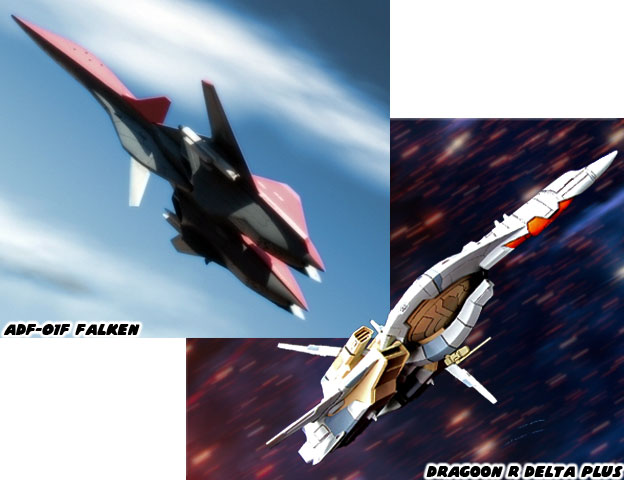
It was no accident that the most revolutionary planes in the Ace Combat series looked like those found in space shooters. The same companies that built these planes, like Neucom and General Resource, were also the companies that were credited for developing the first space ships in Namco canon. The Falken was nothing more than the ancestor of the Dragoon. Ace Combat 3: Electroshpere was a pivotal moment in the Namco universe. With the advent of new types of aircraft there also came a new definition of combat. The biggest nations had access to technology that allowed them to rain terror upon rival factions from sub-orbital platforms. This put a lot of fear in the population. Who would protect them from a terrorist group gaining access to these engines of destruction? A resolution was created to curb these types of weapons and make them more defensive in nature. The countries (and corporations) that joined into this group were like the U.N. except now their jurisdiction extended out into space. The seeds for the UGSF had been planted before humanity ever left the Earth.
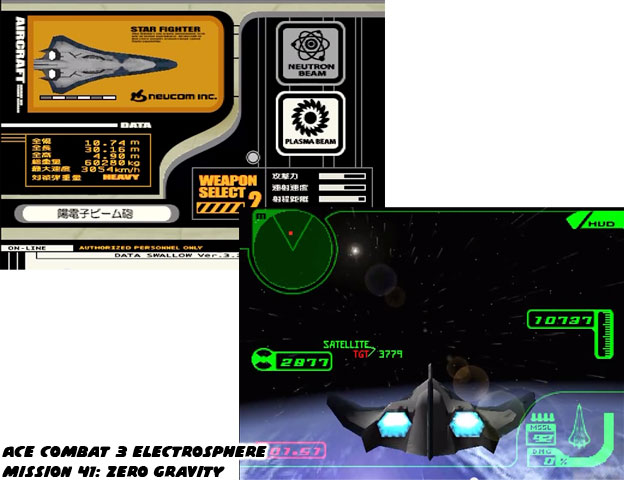
Playing through Electrosphere really made me feel like I was participating through an important moment in the history of videogames. The graphics were considered blocky and crude by today’s standards but the level of gameplay achieved was amazing. Namco spared no expense at bringing a fantastic new world into homes. Like Ridge Racer Type 4 this game would become the standard by which all other Ace Combat, and dogfighting games in general, would be measured against. I got goosebumps when I realized what Namco was doing. During
Mission 41 aka "Zero Gravity" I was tasked with a mission that sounded impossible. With politicians debating the merits of the UGSF on the ground I was ordered to shoot down rogue satellites floating in orbit. I was put into an experimental Star Fighter by Neucom. It lacked the visual grace of the Delphinus but was designed not for air-to-air combat but for space-to-space combat. The Star Fighter was strapped onto a booster rocket and sent into orbit. I remember holding onto the Playstation controller and saying to myself “no way, no way, no way” in disbelief. The maximum space flight time was 3 minutes and the fighter was equipped with a Neutron Beam or a Plasma Beam with which to shoot down the satellites. It may not sound like a lot of time, especially considering that some battles in the game were much longer. What made it memorable however was looking down on Earth and realizing that the company had taken the series to an entirely new level.
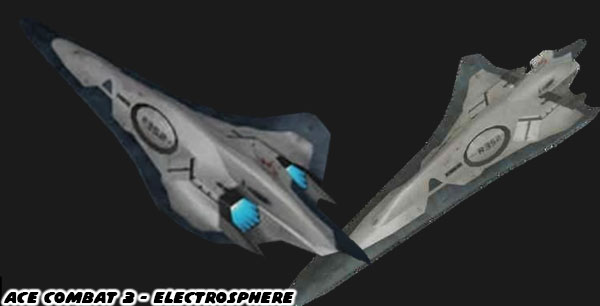
Imagine how powerful this moment was to a gamer. For the majority of my gaming experience there was only one way to fly and shoot a plane. All of a sudden I was in space with a small window in which to accomplish the mission. To top it off I then had to get the plane lined up for re-entry into the atmosphere. It was nothing short of mind blowing! I had spent most of my gaming life connecting the pieces between every space shooter the company had ever produced but knew there were some gaps between how humanity got into space to begin with. I was now getting a chance to pilot the very first mission aboard the very first space shooter. It was very profound. Those first tentative steps beyond our planet weren’t glamorous. They were not to fight off an alien invasion or even to deflect an asteroid, but they were still important milestones.
The Star Fighter would become the great, great, great grandfather of the ships featured in Galaxian, Galaga, Starblade and every other UGSF title. I was grateful to be the pilot on that historic mission. Of course I’m certain millions of other gamers were happy to play through that scenario again and again.
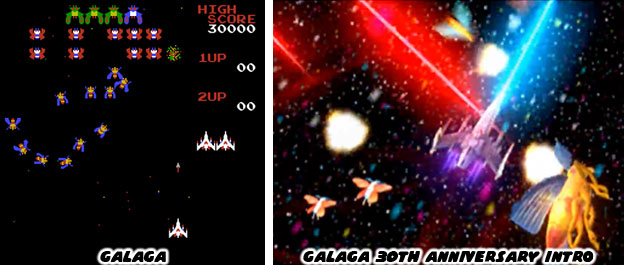
The developers at Namco were eager to build the framework that would support the continuity of the UGSF. The UGSF was formed when the Earth was the only planet in the federation. The corporations that built amazing fighter jets in Ace Combat were preparing for space combat. Yet there were still some missing pieces of the puzzle. The developers had to figure out how other titles could help fill in the blanks. In the process they would end up tying together just about every game the company had ever released. Can you guess which series would become the missing link? Find out in the next blog. As always if you would like to sponsor me
please visit my Patreon page and consider donating each month, even as little as $1 would help make better blogs and even podcasts!











Great article! I know that is an old topic but, YES, you're right, as a big fan of Ace Combat, while I was working on the Zero my true inspiration was exactly the Delphinus. ;) Big time!
ReplyDeleteTake a look at my tumblr and website and feel free to ask anything you want!
oct8n.tumblr.com
oct8n.com
Take care!
Giulio
Giulio, thank you for that bit of insight. Your design was revolutionary. I wish Namco was given more credit for their legacy games and how they influenced other studios.
Delete